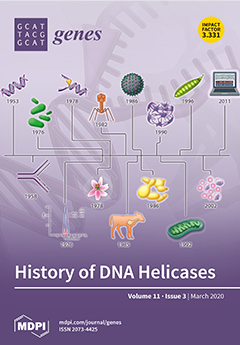Azorhizobium caulinodans is a symbiotic nitrogen-fixing bacterium that forms both root and stem nodules on
Sesbania rostrata. During nodule formation, bacteria have to withstand organic peroxides that are produced by plant. Previous studies have elaborated on resistance to these oxygen radicals in
[...] Read more.
Azorhizobium caulinodans is a symbiotic nitrogen-fixing bacterium that forms both root and stem nodules on
Sesbania rostrata. During nodule formation, bacteria have to withstand organic peroxides that are produced by plant. Previous studies have elaborated on resistance to these oxygen radicals in several bacteria; however, to the best of our knowledge, none have investigated this process in
A. caulinodans. In this study, we identified and characterised the organic hydroperoxide resistance gene
ohr (AZC_2977) and its regulator
ohrR (AZC_3555) in
A. caulinodans ORS571. Hypersensitivity to organic hydroperoxide was observed in an
ohr mutant. While using a
lacZ-based reporter system, we revealed that OhrR repressed the expression of
ohr. Moreover, electrophoretic mobility shift assays demonstrated that OhrR regulated
ohr by direct binding to its promoter region. We showed that this binding was prevented by OhrR oxidation under aerobic conditions, which promoted OhrR dimerization and the activation of
ohr. Furthermore, we showed that one of the two conserved cysteine residues in OhrR, Cys
11, was critical for the sensitivity to organic hydroperoxides. Plant assays revealed that the inactivation of Ohr decreased the number of stem nodules and nitrogenase activity. Our data demonstrated that Ohr and OhrR are required for protecting
A. caulinodans from organic hydroperoxide stress and play an important role in the interaction of the bacterium with plants. The results that were obtained in our study suggested that a thiol-based switch in
A. caulinodans might sense host organic peroxide signals and enhance symbiosis.
Full article






